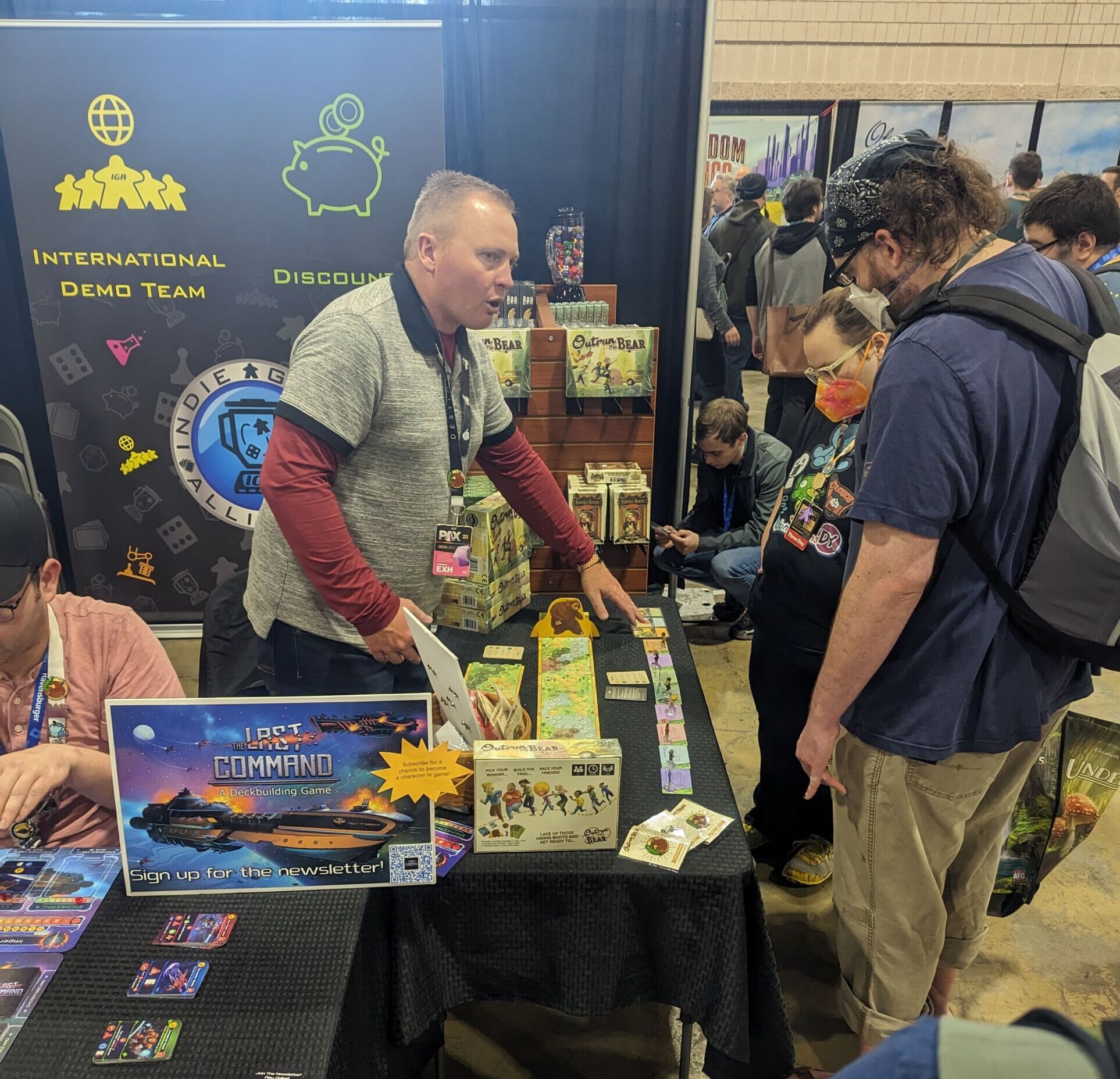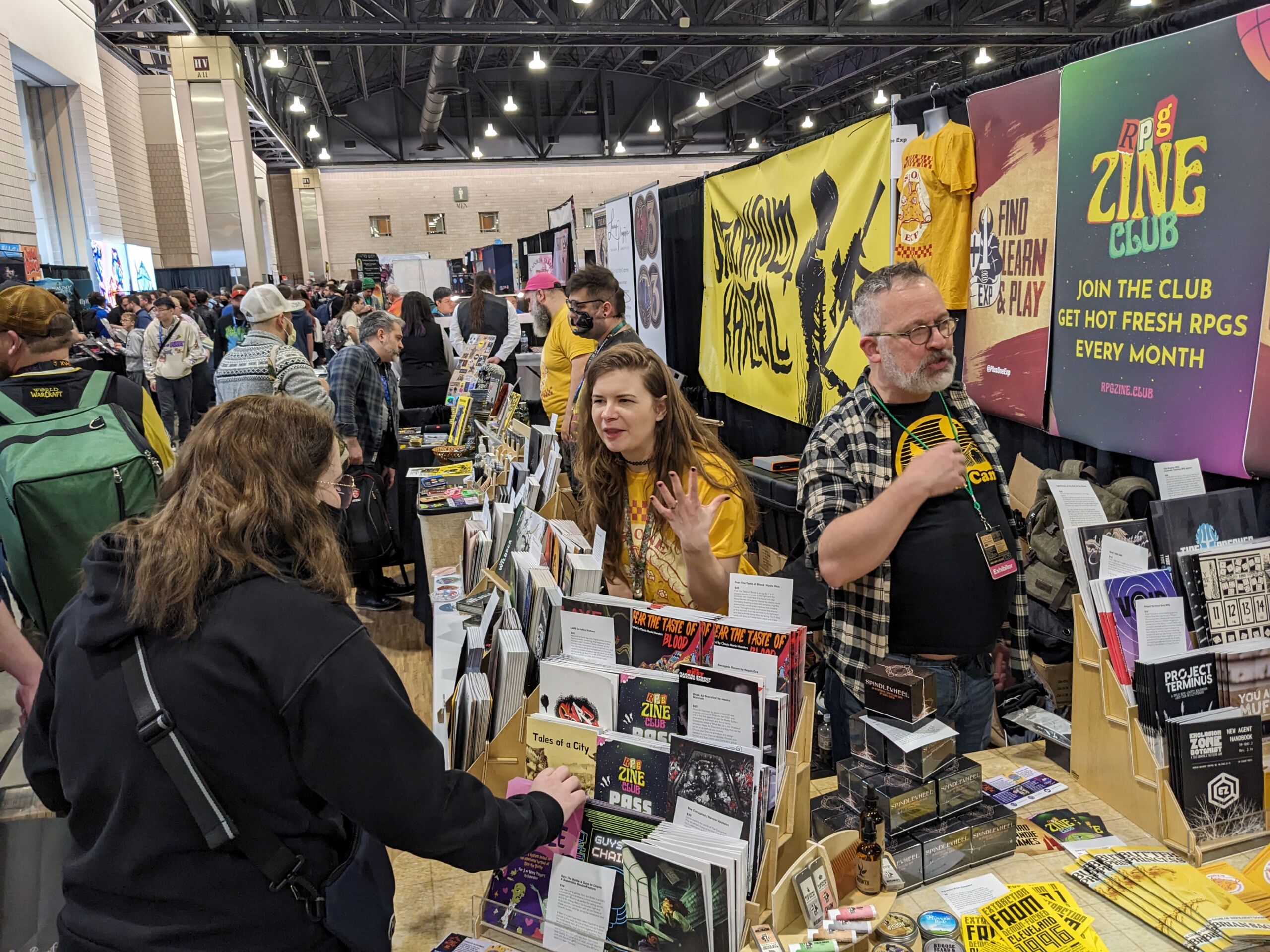New Catan game has overpopulation, pollution, fossil fuels, and clean energy
The Unsettling of Catan —
If pollution levels go too high, the game ends for everyone. It’s a fun escape!
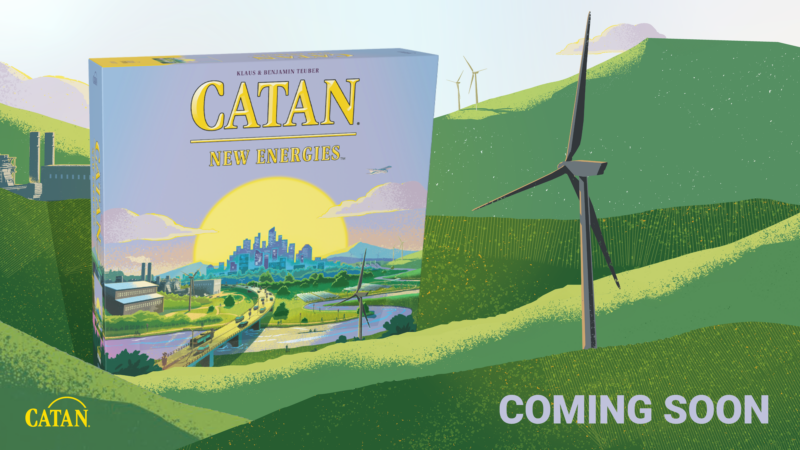
Enlarge / If you didn’t know what “New Energies” meant, this promotional image puts a windmill on it.
Catan GmbH
In Klaus Teuber’s Catan (previously Settlers of Catan), the player is tasked with starting from scratch and building as much as they can: the largest army, the most cities, the best sea ports for easy trading, even the longest road. It’s all beneficial, and the only real drawback is that you have to prioritize certain things over others. There wasn’t direct conflict or battle, but there were scarce resources, and the savviest player could corner the market for them.
Catan was released in 1995. Now, in 2024, Teuber’s son, Benjamin Teuber, is releasing Catan: New Energies, which he developed with his late father. While it is “rooted in classic Catan mechanics of trading, harvesting, and building,” there are some decidedly 2024 issues at play now that the Vikings have settled in for more than a millennia.
As detailed by Benjamin Teuber in a Fast Company interview, New Energies will see players:
- Choosing between cheaper fossil fuel power or research-intensive renewables
- Limited in resources as pollution grows
- Ending the game entirely if pollution hits a certain level
- Countering pollution with “green tokens” from renewable building
- Dealing with the effects worldwide climate change exacts on smaller islands
- Realizing that “As in real life, the most sustainable player does not always win.”
It is, however, a hopeful game. The game comes by its “meaningful, evidence-based message” as sincerely as is possible for a mass-produced product. New Energies is printed and assembled in the US, contains no plastic, and uses sustainably sourced wood and paper materials. It’s available now for preorder at $70 and due in the spring of 2024.
-
Catan: New Energies with all pieces and boards laid out
Catan GmbH
-
A player board from Catan: New Energies. The brown pieces are drawn more frequently at the beginning, but gradually transition to green tokens.
Catan GmbH
-
Dev cards from Catan: New Energies.
Catan GmbH
As with Catan games in general, the game’s competition for land and resources is balanced by the presence of other players, whose actions, appetite for trading, and even collaboration can affect outcomes.
“Very often at the end of the game, you see everybody completely freaking out, like, ‘Oh man, we’ve got to save the world!’” Benjamin Teuber told Fast Company. “But the pollution is already here, like what did you expect? And then maybe people start working together, and that’s a really nice effect that makes you think ‘if we do all work together and all did our share, then it can work, and all it cost is that we grow a little bit slower.’”
If you haven’t played a Catan game in a while or missed most of the variants and alternate settings, New Energies might provide a distinctly fresh experience. The artwork, by Ian O’Toole (On Mars, Rococo, Fit to Print), is distinct from the original. And the new systems look like they’ll provide some new layers of strategy for those who might feel too familiar with the core Catan concepts.
At a minimum, you can test your friends’ patience and sense of humor by playing as a game-ending cheap coal villain. Global footprint marker? Environmental inspector? Not your problem.
This post was updated at 3: 30 p.m. Eastern to note the game’s overall hopeful nature, which might not have been apparent at first glance.
New Catan game has overpopulation, pollution, fossil fuels, and clean energy Read More »
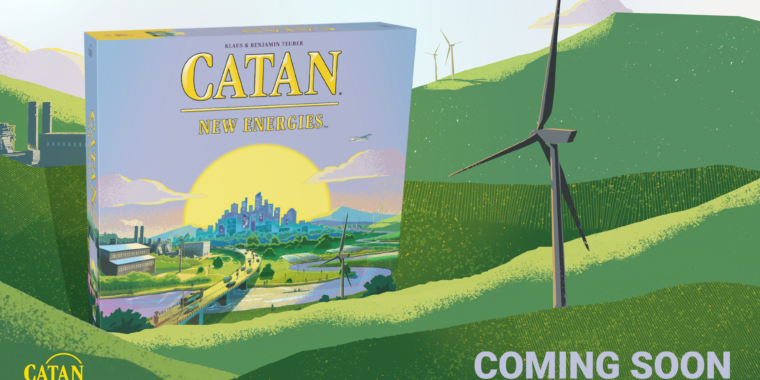
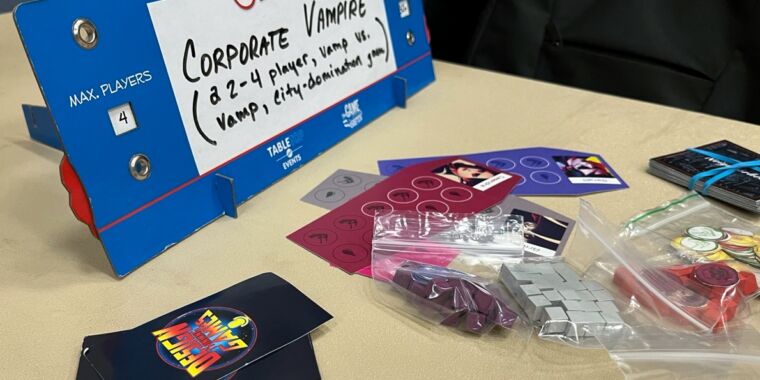

![Hand-cut tokens and make-do squares for an early version of <em>Thirst</em>.” height=”960″ src=”https://cdn.arstechnica.net/wp-content/uploads/2023/12/IMG_3964-Large.jpeg” width=”1280″></img><figcaption>
<p>Hand-cut tokens and make-do squares for an early version of <em>Thirst</em>.</p>
<p>Kevin Purdy</p>
</figcaption></figure>
<p>The way <i>CorpVamp</i>/<i>Thirst</i> should go is that each night, a vampire wakes up, loses a little blood, then sets out to get much more back by exploring a Victorian city. In populated neighborhoods, a vampire can feast on people—but doing so generates a board-altering Consequence, such as roving security guards or citizens discovering bodies. Vampires accumulate victims and hypnotize them for Influence, depending on who the victims are (“Judge” versus “Roustabout,” for example), turn them into “Baby Vampires,” or simply keep them as blood stock. You win by accruing victory points for various misdeeds and achievements.</p>
<p>One player, who told the designers that a different game’s play-test saw him “break the game in 10 minutes,” seemed bothered by how Consequences can be triggered by a single player’s actions but affect all players. Another has a hard time keeping track of the tokens for influence, movement, and blood, and when to move them on and off the board. That’s called “mess testing,” Schofield tells me, and he’s working on it. Some things will be easier to learn and use when the pieces have better designs and materials. But the <i>CorpVamp</i> team can’t jump to that stage until the mechanics are locked down.</p>
<p>As that group finishes a test, another group sits down immediately, having stood nearby to ensure their chance. Schofield and Broadwater won’t lack for players in their three-hour slot. That tells the team there’s “evidence of a market,” that their game has “stopping power” and “shelf value,” despite its obscurity, Schofield says. But there’s lots of work still to be done in alpha. “The costs of powers are too high, the powers aren’t <i>badass enough</i> [emphasis his], and the tactile movement of placing cubes and flipping tokens isn’t quite right,” he later tells me.</p>
<p>After more iterations and some “blind” play tests (players learning, playing, and finishing the game without creator guidance), the game will be in beta, and the team will get closer to pinning down the look and feel of the game with illustrators and designers. Since their schedules only afford them roughly three hours of dedicated collaboration time every week, they lean on what they’ve learned from their product-oriented day jobs. “Frequent iterations and small feedback loops will iron things out,” Schofield says. “Process wins.”</p>
<p>Then they can “enjoy the problems of production and distribution logistics.” After that, “We’ll sell copies of <i>Thirst</i> at the next PAX Unplugged.”</p>
<figure><img decoding=](https://cdn.arstechnica.net/wp-content/uploads/2023/12/who_knew-scaled.jpg)
